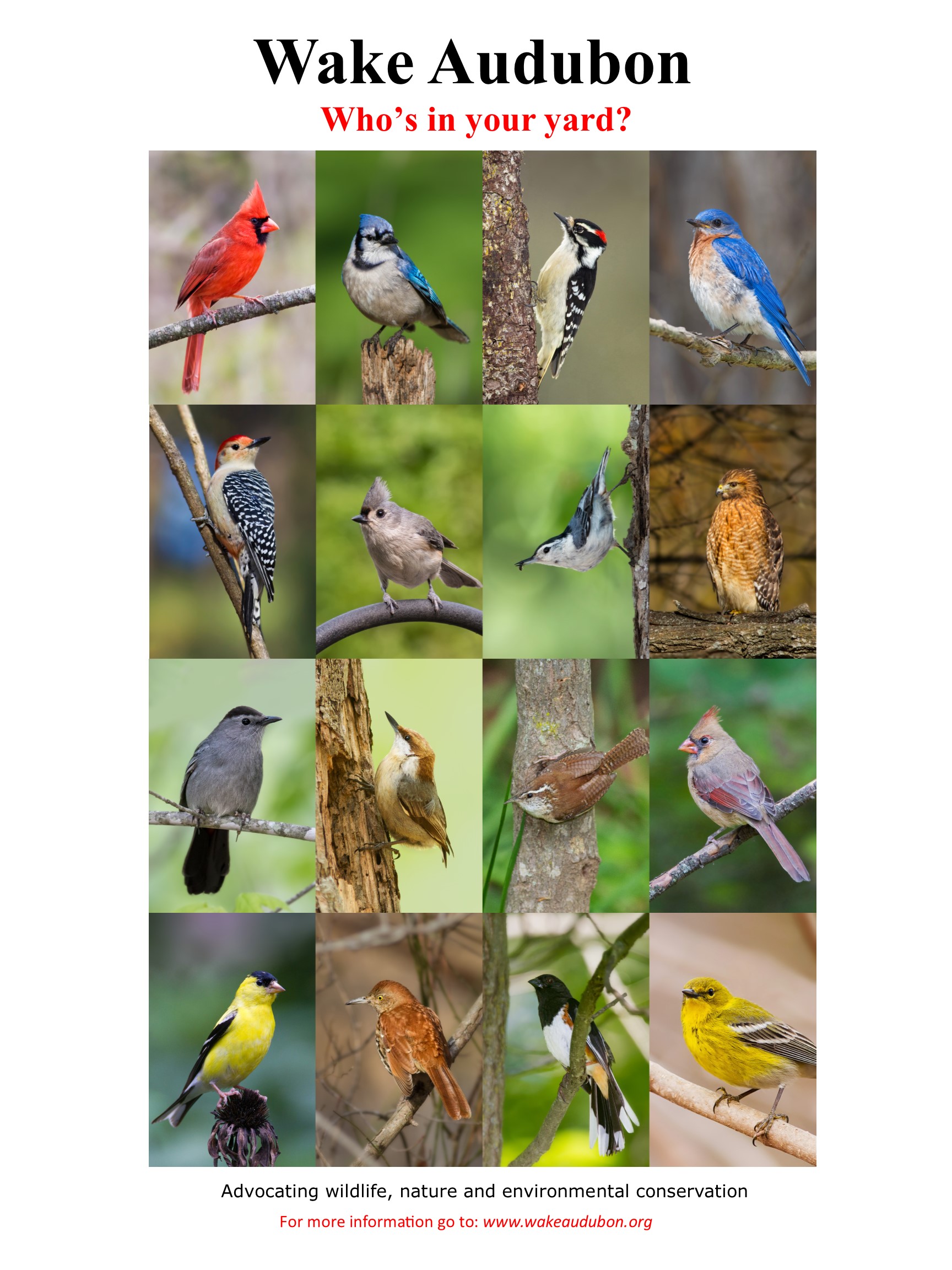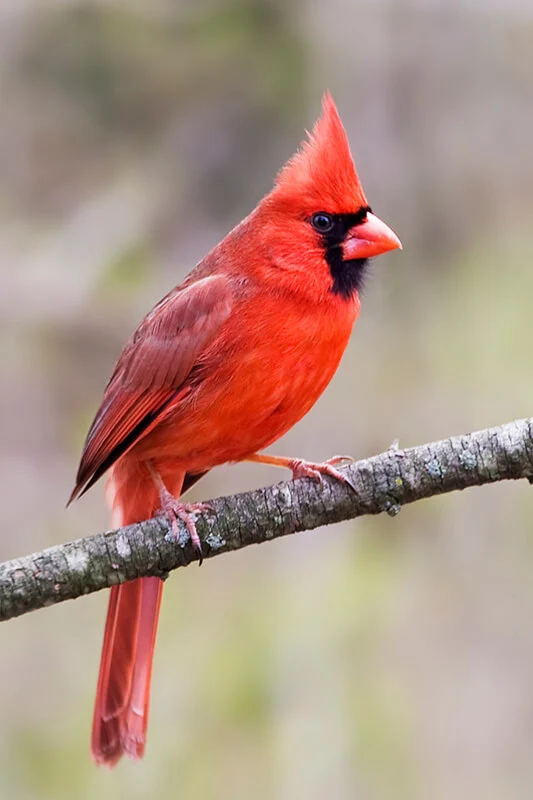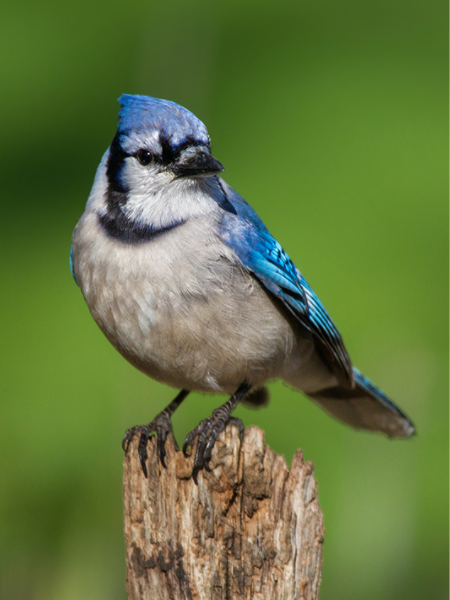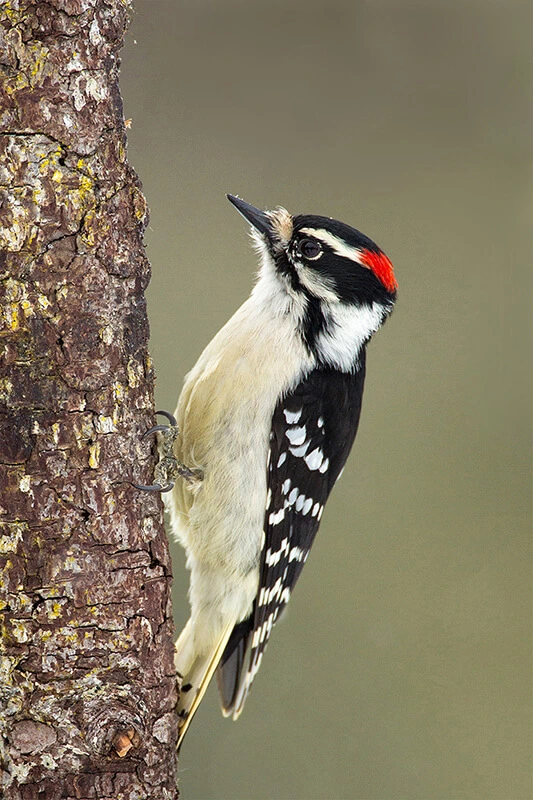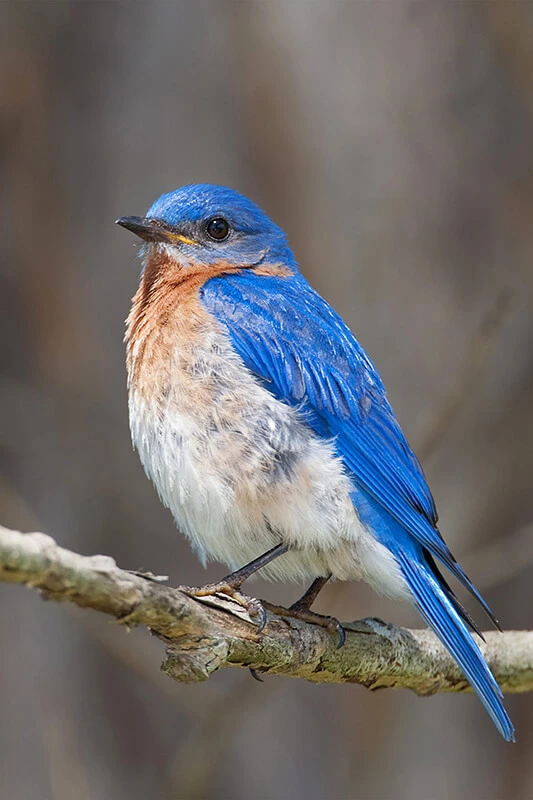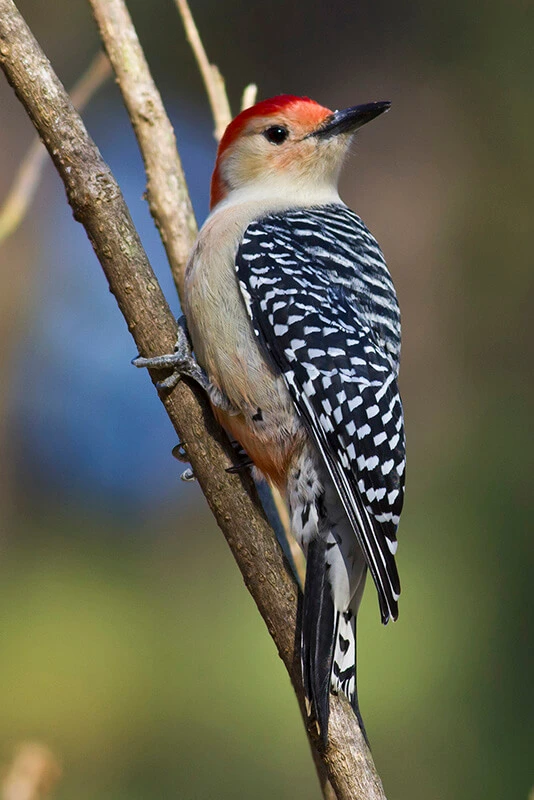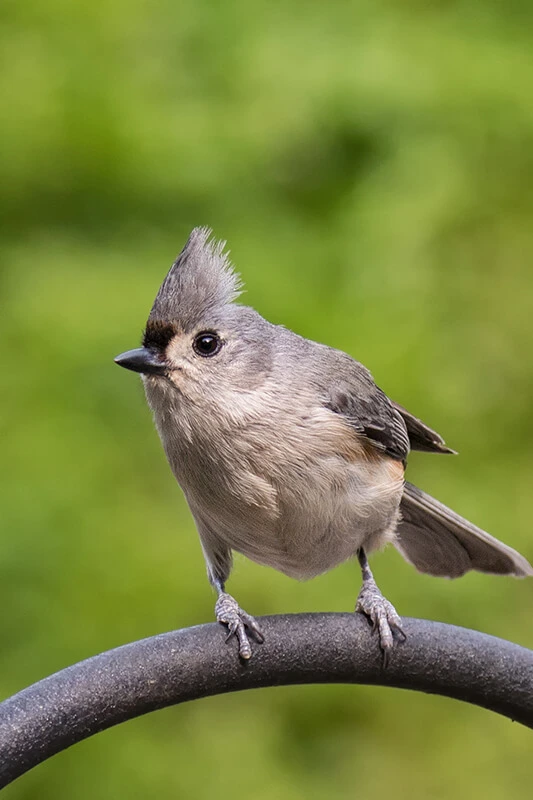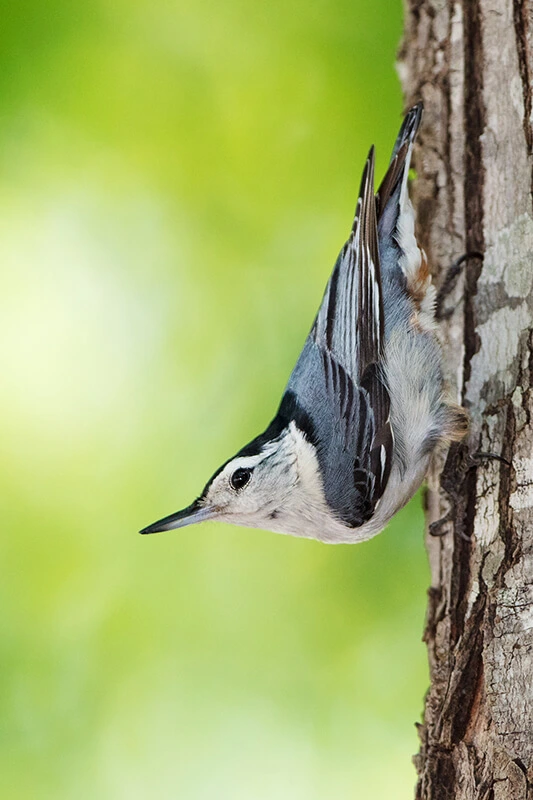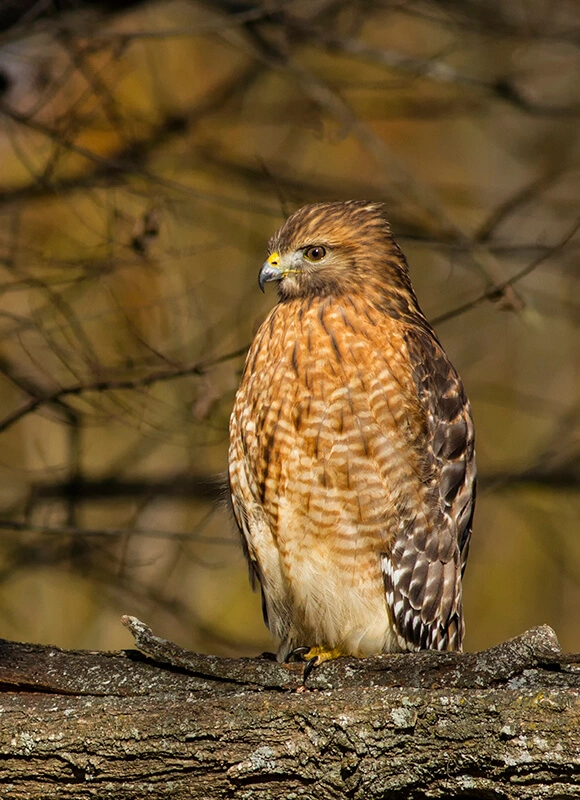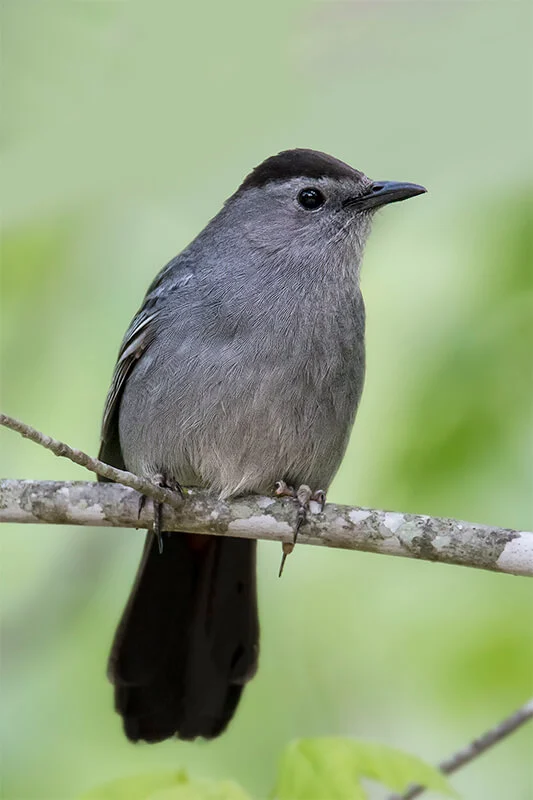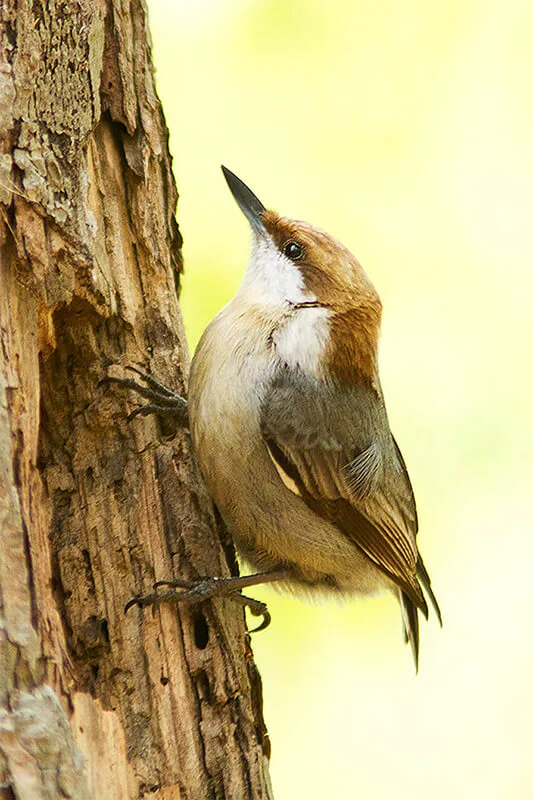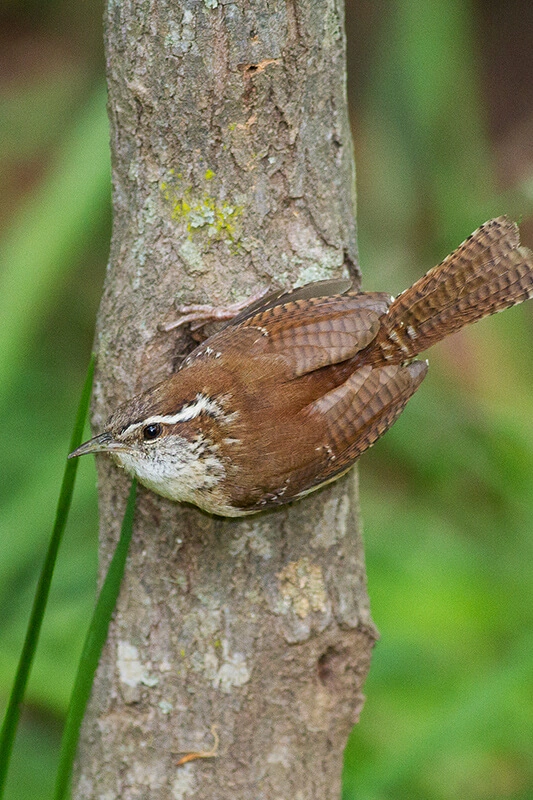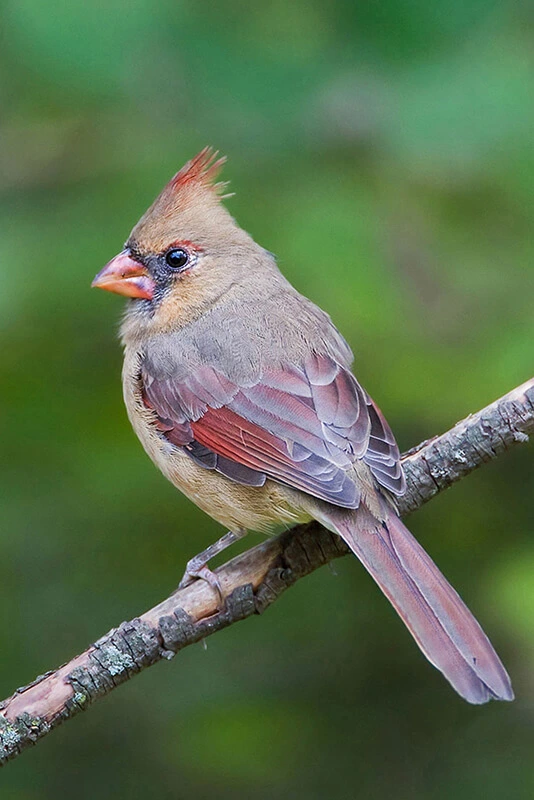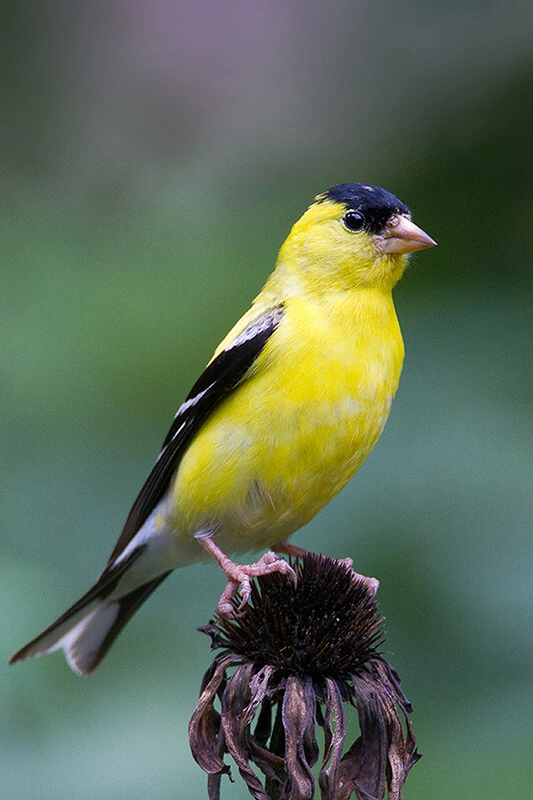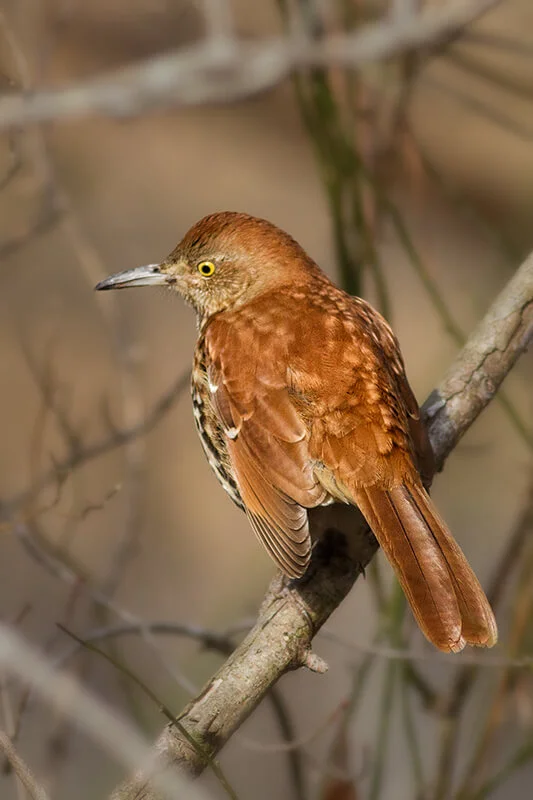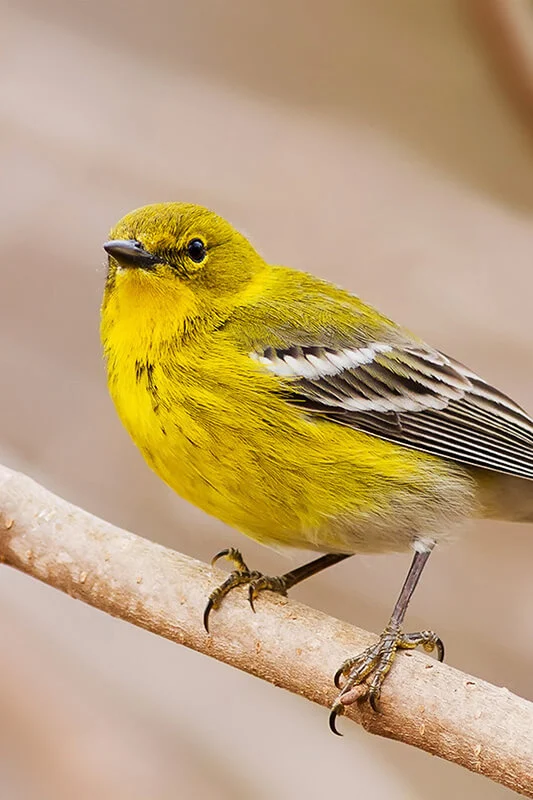This backyard bird poster is a free resource that anyone can use to learn common backyard bird names. Use this poster for a classroom, outreach event, bingo board, or another creative project!
Northern Cardinal, male
Northern Cardinal, male. Cardinals are about 8.5 inches long. The female is shown on the third row of the poster. The Northern Cardinal is a year-round resident throughout the eastern half of the U.S. Cardinals eat seeds, fruits and insects and they are frequent backyard feeder visitors. They feed their young primarily insects. Nests are built in dense foliage. In Wake County, pairs may raise 1 or 2 broods of 2-5 babies. Babies are born blind and mostly naked but are ready to leave the nest(fledge) in 7 – 13 days Cardinals have many calls and whistles.
Blue Jay
The Blue Jay is another year-round resident of the eastern U.S. Males and females look alike and are 11 inches long. Blue Jays eat insects, nuts (especially acorns) and fruit. They raise 1 brood per year. The 2-9 eggs take 2-3 weeks to hatch and the babies take another 2-3 weeks to fledge. Blue Jays do occasionally eat eggs and young birds of other species, but only about 1% of Blue Jays do this. Blue Jays have many calls, including one that imitates a Red Shouldered Hawk.
Downy Woodpecker, male
The Downy Woodpecker, 5.5 – 6.7 inches long, is the smallest woodpecker in North America. The very similar Hairy Woodpecker, is about 3 inches bigger, has a relatively longer beak, and is not as commonly seen. The female Downy Woodpecker looks like the male except she lacks the red spot at the back of the head. The Downy Woodpecker, seen in yards, it is in North Carolina year-round. They eat a wide variety of insects and will eat suet. They are cavity nesters, digging out a nest hole in soft, dead or diseased wood. The 3-8 eggs take almost 2 weeks to hatch and it is another 2-3 weeks before the nestlings are ready to fledge. Downy Woodpeckers don’t sing, but they drum on wood or metal to stake out their territories and they have a distinctive call.
Eastern Bluebird
Eastern Bluebirds are 7 inches long. The female is paler than the male. Eastern Bluebirds are permanent residents in the southeastern United States. Additional birds from the northeast migrate to our area for the winter. Bluebirds typically survey the ground from a tree branch or wire, looking for insects. They come to feeders with mealworms and occasionally to suet and seed feeders. Eastern Bluebirds are cavity nesters, using old woodpecker holes or nest boxes. The 2-7 eggs take 11-19 days to hatch, and the baby birds take another 3 weeks to fledge. The birds may raise a second brood in the same nest hole or in a new one.
Red-bellied Woodpecker
At 9 inches from head to tail, this woodpecker is much bigger than the Downy Woodpecker shown in the top row of the poster. The red belly is a pale red just on the lower part of the belly, not the chest, and is often hard to see. The top of the head and nape are red in the male; in the female the red is just on the nape. Red-bellied Woodpeckers are permanent residents of all but the northern-most regions of the eastern U.S. They commonly live in wooded areas and often come to suet feeders. They eat mainly insects but they also eat fruit, nuts and seeds. Red-bellied Woodpeckers excavate their own nest holes in dead wood. They lay 2-6 eggs that take about 2 weeks to hatch. The baby birds take 3 to 4 weeks to develop enough to leave the nest. Red-bellied Woodpeckers have a distinctive call.
Tufted Titmouse
These birds are about 6 inches in length. They are common year-round residents of wooded areas throughout the eastern U.S. The Tufted Titmouse eats mainly insects, including caterpillars, ants and wasps. They also eat a variety of seeds and nuts and regularly visit seed feeders. Tufted Titmice are cavity nesters that use abandoned woodpecker holes or other natural cavities. They readily take to nest boxes. They lay 3-9 eggs which take 2 weeks to hatch and the baby birds take a little over 2 weeks to fledge. The Tufted Titmouse song is characterized as a rapidly repeated “peter-peter-peter”.
White-breasted Nuthatch
The White-breasted Nuthatch is 5-5.5 inches long. They are year-round residents through-out most of the US. and Mexico. They move up and down tree trunks and along branches searching for insects. They eat mostly insects and seeds and will visit seed and suet feeders. White-breasted Nuthatches are cavity nesters that use abandoned woodpecker holes, natural cavities, and nest boxes. They lay 5-9 eggs. The baby birds hatch after 2 weeks and fledge in a little over 3 weeks. White-breasted Nuthatches have a loud, nasal call.
Red-shouldered Hawk
The Red-shouldered and Red-tailed Hawks are the most numerous large, bulky hawks in our region and both are here year-round. The Red-shouldered Hawk is about 17 inches long, usually has a reddish breast, and a rusty red shoulder. This hawk eats reptiles, amphibians, small mammals and birds. Red-shouldered Hawks usually build their nests in the crotch of a large tree. They lay 2-5 eggs that take about 5 weeks to hatch. Nestlings take another 5 weeks to fledge. The call of the Red-shouldered Hawk in a high, repeated “keeyuur”.
Gray Catbird
This handsome gray bird with the black cap and long tail is often heard before it is seen. A member of the family Mimidae (or Mimics), you may hear it’s cat-like mewing as it skulks in the brush. Here it finds the berries and insects that it prefers to eat. Catbirds lay 1-6 eggs in cup-shaped nest built in the center of dense shrubs. Eggs hatch in about 2 weeks, after which the young remain in the nest for about 10 days, Adults may have a second and even third brood. The Gray Catbird can be found during summer in the Eastern and Central portions of the U.S, and year-round further East and South.
Brown-headed Nuthatch
If you’re out and about near some pine trees and you hear the squeak of a rubber ducky, be on the lookout for a Brown-headed Nuthatch. These 4.5 inch birds, with a brown cap extending to the neck where it meets the gray back, may be seen at bird feeders, too, and often travel in a pack. They are cavity nesters, using dead and decaying trees or nest boxes, and will raise one brood of 3-7 young. Spiders, insects and pine seeds are their main foods. The Brown-headed Nuthatch is found year round in the Southeastern United States.
Carolina Wren
At 5.5 inches, the small but feisty Carolina Wren is is easily seen and heard throughout the Eastern U.S. This backyard bird is a beautiful rusty brown with a bright white eyebrow stripe. Carolina Wrens build their bulky nest from various materials just 3-6 feet off the ground, and often build in household objects like flowerpots and mailboxes. The female lays 3-7 finely-spotted eggs with 1-3 broods per year. Eggs hatch in about 2 weeks, and young remain in the nest for 10-16 days.
Northern Cardinal, female
Most people associate the North Carolina State bird, the Northern Cardinal, with the brilliant red male. The female Cardinal sports the same jaunty crest and at almost 9 inches is the same size as the male, but is a duller buffy-brown. She shares the male’s black face and large, orange-red bill. The female Northern Cardinal is one of the few female songbirds who sings. Listen for a what-cheer or the loud chip call.
American Goldfinch
This beautiful, bright, yellow and black bird is one of the smaller ( 5 inches) finches. The conical bill is perfect for feeding on sunflower and nyjer seeds provided in bird feeders but they also enjoy a variety of grass and flower seeds found in gardens and fields. The 3-inch nest is lined with fluffy materials and holds a midsummer clutch of 2-7 eggs, hatching after about 2 weeks. Look for the Goldfinch’s roller coaster flight pattern when you hear the ti di di di flight call overhead. They’re found year-round in most of the upper and middle United States.
Brown Thrasher
The Brown Thrasher is another member of the Mimidae( Mimics) family, a long-tailed, reddish brown bird with a boldly streaked breast. It is often found on the ground in dense brush, tossing leaves aside with it’s long, curved bill as it searches for insects. This year-round resident of the southeastern U.S. builds a nest in low, thorny shrubs or trees for a clutch of 2-6 eggs. After a 2-week incubation, the young remain in the nest for about 10 days. The male is an enthusiastic singer of musical phrases repeated twice each.
Eastern Towhee
At 8.5 inches, the Eastern Towhee is one of the larger members of the Sparrow family. This secretive bird scratches in leaf litter for insects and seeds. It’s song is a musical drink your tea ee ee while it’s call is a loud chewink. Nests are usually built on the ground, with 2-6 spotted and speckled eggs and 1-3 broods a season. Males and females are not identical, as the female substitutes brown feathers where the male has black.
Pine Warbler, male
The Pine is the only warbler found year-round in the Southeastern U.S. They are also not as showily patterned as other warblers, but look for their white wingbars if you see a yellow-chested warbler at your suet feeder. They eat mostly insects, but will eat seeds as well. True to their name, Pine Warblers nest high up in pine trees, with 3-5 speckled eggs in 1-2 broods per year. Their song is a musical trill that may be confused with the Chipping Sparrow’s.



